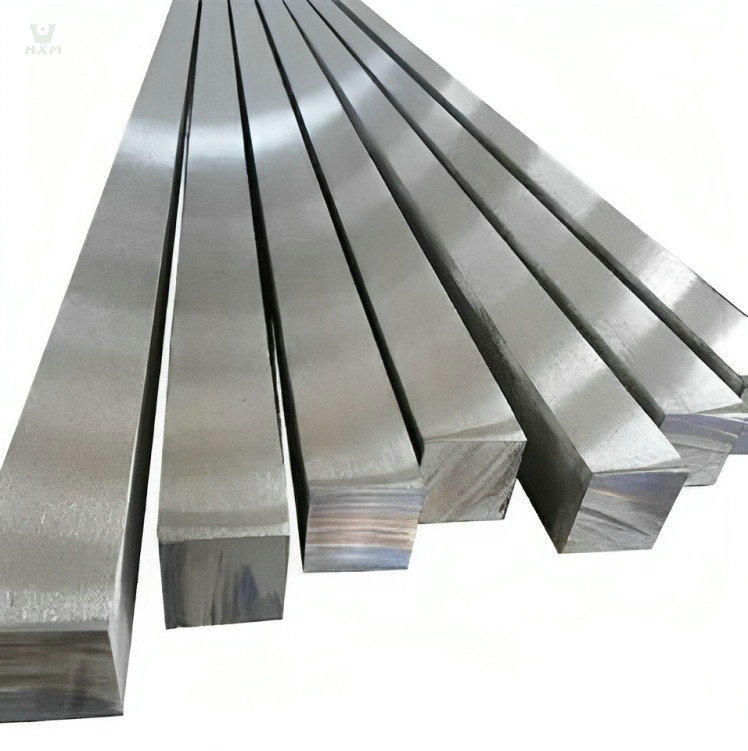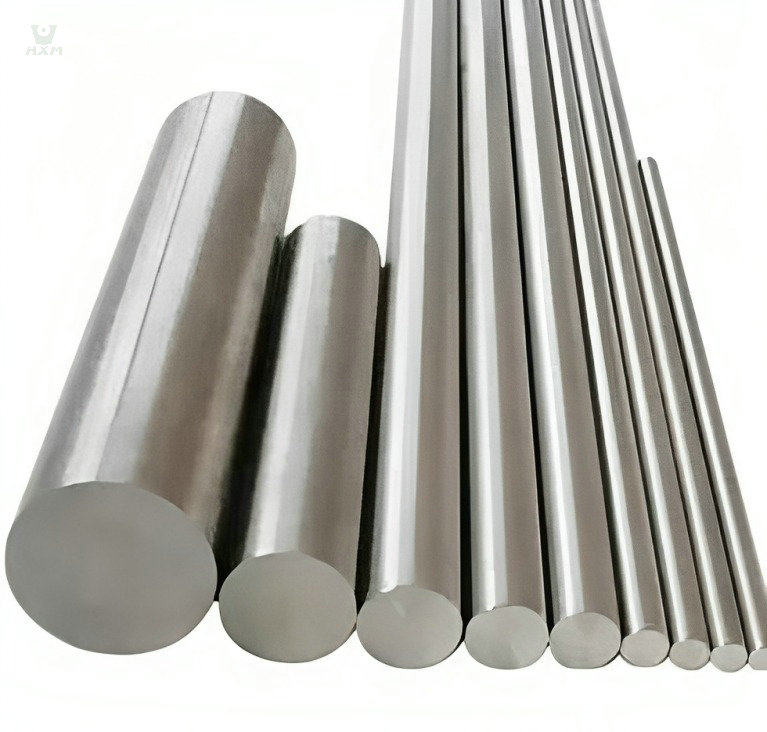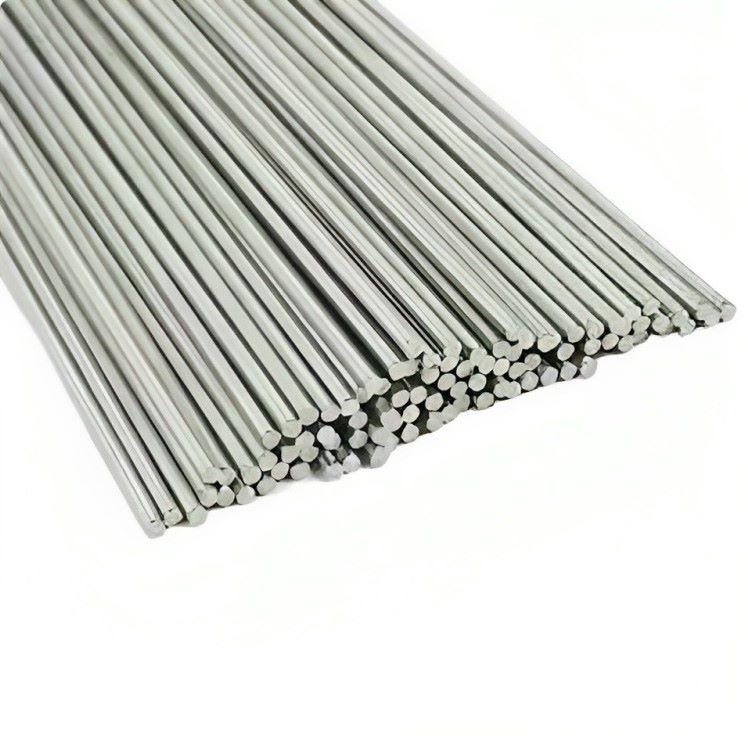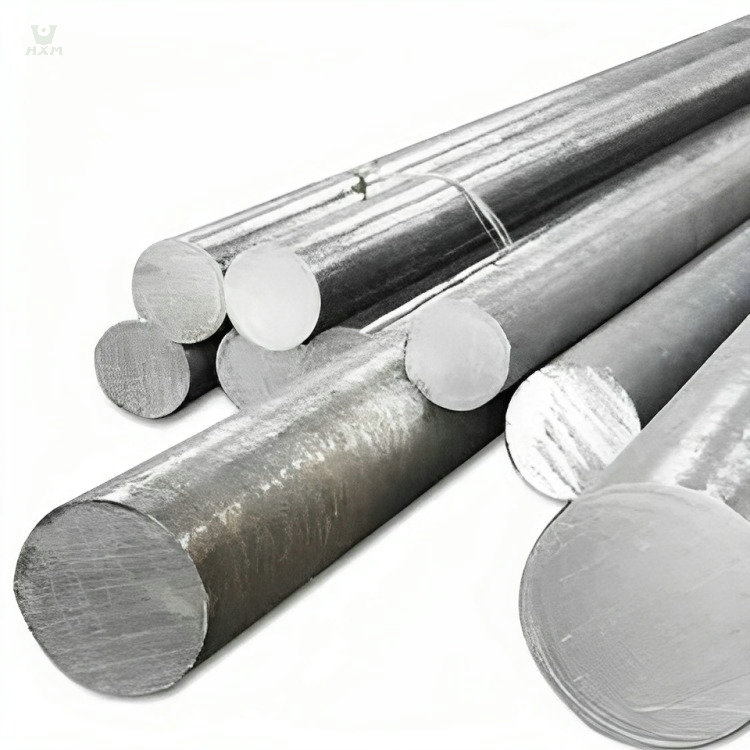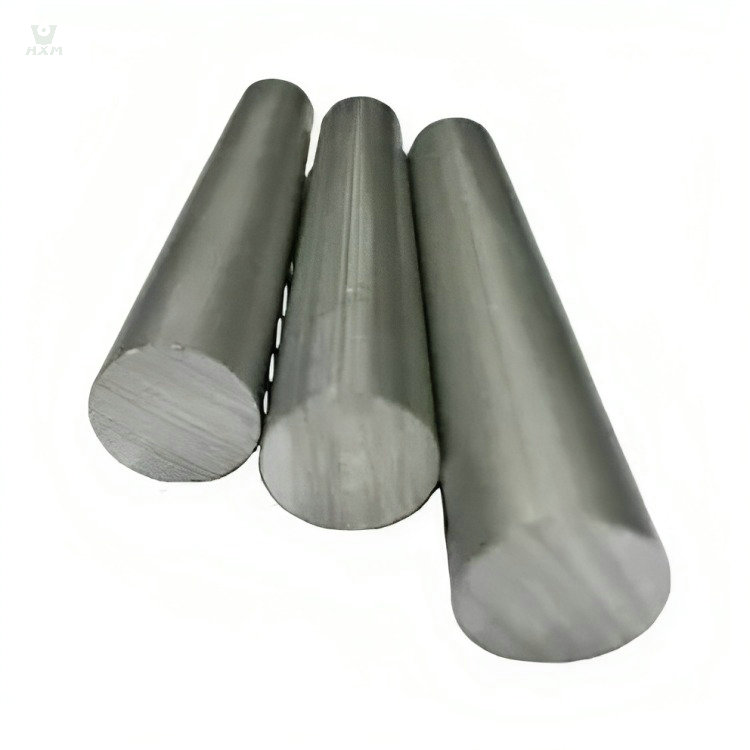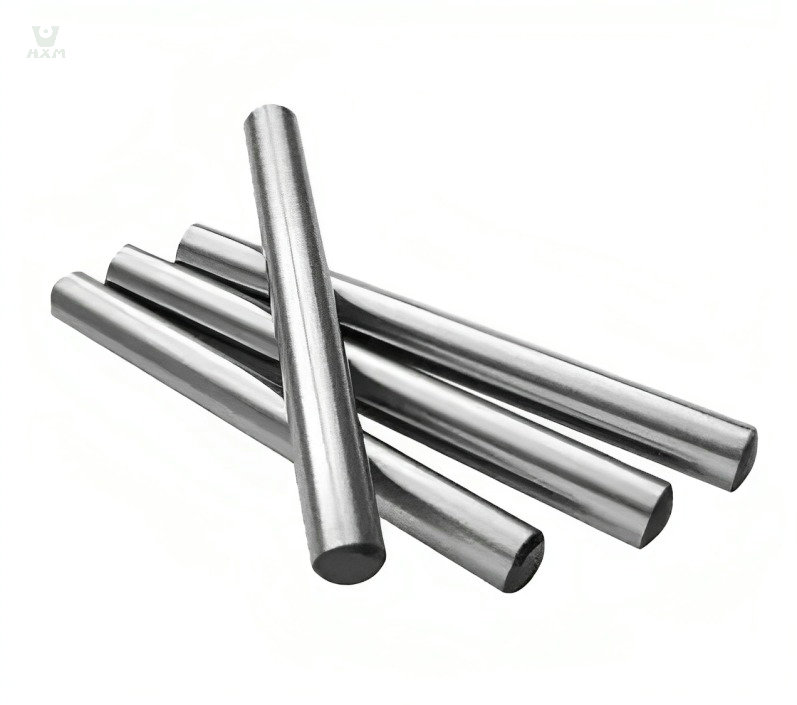Stainless Steel Angle Bar Supplier
- Size: 2#-20#, 20 x 20 – 100 x 100
- Standard: GB1220, ASTM A 484/484M, EN 10060/ DIN 1013 ASTM A276, EN 10278, DIN 671
- Main Grade: 201, 304, 316, 316L, 310s, 430
- Finish: Black, NO.1, mill finish, cold draw
Product Description Of Stainless Steel Angle Bar
Stainless steel angle steel is a long strip of steel that is perpendicular to each other on both sides. There are equilateral stainless steel angles and unequal stainless steel angles. The sides of the equilateral stainless steel angle are equal in width. The specifications are expressed in millimeters of side width × side width × side thickness.
For example, “∠25×25×3” means an equilateral stainless steel angle with a side width of 25 mm and a side thickness of 3 mm. It can also be expressed by model number, the model number is the number of centimeters of the side width, such as ∠2.5#. The model does not indicate the size of the different side thicknesses in the same model. Therefore, the side width and thickness of the stainless steel angle steel are filled in the contract and other documents, and the model is not to be used alone. The specification of hot-rolled equilateral stainless steel angle steel is 2#-20#.
Stainless steel angle steel can be composed of various force-receiving members according to the different needs of the structure, and can also be used as a connecting member between the components. Widely used in a variety of building structures and engineering structures, such as beams, bridges, transmission towers, lifting and transport machinery, ships, industrial furnaces, reaction towers, container racks, and warehouse shelves.
specification Of Stainless Steel Angle Bar
Main grade description in different standard
ASTM | DIN / EN | JIS | GB | ISO Name | Other |
S20100 201 | 1.4372 | SUS201 | S35350 | X12CrMnNiN17–7-5 | J1 L1 LH 201J1 |
S20200 202 | 1.4373 | SUS202 | S35450 | X12CrMnNiN18–9-5 | 202 L4, 202 J4, 202 J3 |
S30400 304 | 1.4301 | SUS304 | S30408 | X5CrNi18-10 | 06Cr19Ni10 0Cr18Ni9 |
S31603 316L | 1.4404 | SUS316L | S31603 | X2CrNiMo17-12-2 | 022Cr17Ni12Mo2 00Cr17Ni14Mo2 |
S40900 409 | – | SUH409 | S11168 | X5CrTi12 | 0Cr11Ti |
S40910 409L | 1.4512 | SUH409L | S11163 | X2CrTi12 | 00Cr11Ti 022Cr11Ti |
S41008 410S | 1.4000 | SUS410S | S11306 | X6Cr13 | – |
S43000 430 | 1.4016 | SUS430 | 10Cr17 | X6Cr17 | 1Cr17 |
Main grade chemical components in different standard
201 | C % | Si% | Mn % | P % | S % | Ni % | Cr % | N % | Mo % |
ASTM | 0.15 | 1.00 | 5.5-7.5 | 0.050 | 0.030 | 3.5-5.5 | 16.0-18.0 | 0.25 | – |
DIN/EN | 0,15 | 1,00 | 5,5-7,5 | 0,045 | 0,015 | 3,5-5,5 | 16,0-18,0 | 0,05-0,25 | – |
JIS | 0.15 | 1.00 | 5.5-7.5 | 0.060 | 0.030 | 3.5-5.5 | 16.0-18.0 | 0.25 | – |
GB | 0.15 | 1.00 | 5.5-7.5 | 0.050 | 0.030 | 3.5-5.5 | 16.0-18.0 | 0.05-0.25 | – |
202 | C % | Si% | Mn % | P % | S % | Ni % | Cr % | N % | Mo % |
ASTM | 0.15 | 1.00 | 7.5-10.0 | 0.060 | 0.030 | 4.0-6.0 | 17.0-19.0 | 0.25 | – |
DIN/EN | 0,15 | 1,00 | 7,5-10,5 | 0,045 | 0,015 | 4,0-6,0 | 17,0-19,0 | 0,05-0,25 | – |
JIS | 0.15 | 1.00 | 7.5-10.0 | 0.060 | 0.030 | 4.0-6.0 | 17.0-19.0 | 0.25 | – |
GB | 0.15 | 1.00 | 7.5-10.0 | 0.050 | 0.030 | 4.0-6.0 | 17.0-19.0 | 0.05-0.25 | – |
304 | C % | Si% | Mn % | P % | S % | Ni % | Cr % | N % | Mo % |
ASTM | 0.08 | 0.75 | 2.00 | 0.045 | 0.030 | 8.0 – 10.5 | 18.0-20.0 | 0.10 | – |
DIN/EN | 0,07 | 1,00 | 2,00 | 0,045 | 0,015 | 8,0 – 10,5 | 17,5-19,5 | 0,10 | – |
JIS | 0.08 | 1.00 | 2.00 | 0.045 | 0.030 | 8.0 – 10.5 | 18.0-20.0 | – | – |
GB | 0.08 | 1.00 | 2.00 | 0.045 | 0.030 | 8.0 – 10.0 | 18.0-20. 0 | – | – |
316L | C % | Si% | Mn % | P % | S % | Ni % | Cr % | N % | Mo % |
ASTM | 0.030 | 0.75 | 2.00 | 0.045 | 0.030 | 10.0-14.0 | 16.0-18.0 | 0.10 | 2.00-3.00 |
DIN/EN | 0,030 | 1,00 | 2,00 | 0,045 | 0,015 | 10,0-13,0 | 16,5-18,5 | 0,10 | 2,00-2,50 |
JIS | 0.030 | 1.00 | 2.00 | 0.045 | 0.030 | 12.0-15.0 | 16.0-18.0 | – | 2.00-3.00 |
GB | 0.030 | 0.75 | 2.00 | 0.045 | 0.030 | 10.0-14.0 | 16.0-18.0 | 0.10 | 2.00-3.00 |
409 | C % | Si% | Mn % | P % | S % | Ni % | Cr % | N % | Ti % |
ASTM | 0.08 | 1.00 | 1.00 | 0.045 | 0.03 | 0.50 | 10.5-11.7 | – | 6*C% – 0.75 |
DIN/EN | – | – | – | – | – | – | – | – | – |
JIS | 0.08 | 1.00 | 1.00 | 0.040 | 0.030 | – | 10.5-11.7 | – | 6*C% – 0.75 |
GB | 0.08 | 1.00 | 1.00 | 0.045 | 0.030 | 0.60 | 10.5-11.7 | – | 6*C% – 0.75 |
409L | C % | Si% | Mn % | P % | S % | Ni % | Cr % | N % | Ti % |
ASTM | 0.03 | 1.00 | 1.00 | 0.040 | 0.020 | 0.50 | 10.5-11.7 | 0.03 | 6*(C+N)-0.5 |
DIN/EN | 0.03 | 1.00 | 1.00 | 0.040 | 0.015 | – | 10.5-12.5 | – | 6*(C+N)-0.65 |
JIS | 0.03 | 1.00 | 1.00 | 0.040 | 0.030 | – | 10.5-11.7 | – | 6*C% – 0.75 |
GB | 0.03 | 1.00 | 1.00 | 0.040 | 0.020 | – | 10.5-11.7 | 0.03 | Ti≥8*(C+N) |
410S | C % | Si% | Mn % | P % | S % | Ni % | Cr % | N % | Mo % |
ASTM | 0.08 | 1.00 | 1.00 | 0.040 | 0.030 | 0.60 | 11.5-13.5 | – | – |
DIN/EN | 0,08 | 1,00 | 1,00 | 0,040 | 0,015 | – | 12,0-14,0 | – | – |
JIS | 0.08 | 1.00 | 1.00 | 0.040 | 0.030 | – | 11.5-13.5 | – | – |
GB | 0.08 | 1.00 | 1.00 | 0.040 | 0.030 | 0.60 | 11.5-13.5 | – | – |
Main grade mechanical property in different standard
201 | Y.S./Mpa ≥ | T.S./Mpa ≥ | E.L./% ≥ | HB ≤ | HRB ≤ | HBW ≤ | HV ≤ |
ASTM | 260 | 515 | 40 | – | 95 | 217 | – |
JIS | 275 | 520 | 40 | 241 | 100 | – | 253 |
GB | 205 | 515 | 30 | - | 99 | – | - |
202 | Y.S./Mpa ≥ | T.S./Mpa ≥ | E.L./% ≥ | HB ≤ | HRB ≤ | HBW ≤ | HV ≤ |
ASTM | 260 | 620 | 40 | – | – | 241 | – |
JIS | 275 | 520 | 40 | – | 95 | 207 | 218 |
GB | – | – | – | – | – | – | – |
304 | Y.S./Mpa ≥ | T.S./Mpa ≥ | E.L./% ≥ | HB ≤ | HRB ≤ | HBW ≤ | HV ≤ |
ASTM | 205 | 515 | 40 | – | 92 | 201 | – |
JIS | 205 | 520 | 40 | 187 | 90 | – | 200 |
GB | 205 | 515 | 40 | – | 92 | 201 | 210 |
316L | Y.S./Mpa ≥ | T.S./Mpa ≥ | E.L./% ≥ | HB ≤ | HRB ≤ | HBW ≤ | HV ≤ |
ASTM | 170 | 485 | 40 | – | 95 | 217 | – |
JIS | 175 | 480 | 40 | 187 | 90 | 200 | |
GB | 170 | 485 | 40 | – | 95 | 217 | 220 |
409 | Y.S./Mpa ≥ | T.S./Mpa ≥ | E.L./% ≥ | HB ≤ | HRB ≤ | HBW ≤ | HV ≤ |
ASTM | – | – | – | – | – | – | – |
JIS | 175 | 360 | 22 | 162 | 80 | – | 175 |
GB | – | – | – | – | – | – | – |
409L | Y.S./Mpa ≥ | T.S./Mpa ≥ | E.L./% ≥ | HB ≤ | HRB ≤ | HBW ≤ | HV ≤ |
ASTM | 170 | 380 | 20 | – | 88 | 179 | – |
JIS | 175 | 360 | 25 | 162 | 80 | – | 175 |
GB | 170 | 380 | 20 | – | 88 | 179 | 200 |
410S | Y.S./Mpa ≥ | T.S./Mpa ≥ | E.L./% ≥ | HB ≤ | HRB ≤ | HBW ≤ | HV ≤ |
ASTM | 205 | 415 | 22 | – | 89 | 183 | – |
JIS | 205 | 410 | 20 | – | 88 | 183 | 200 |
GB | 205 | 415 | 20 | – | 89 | 183 | 200 |
Production Process and Feature of Stainless Steel Angle Bar
Stainless steel Angel Specification standard
GB/T2101—89 (General provisions for acceptance, packaging, marking, and quality certificates for steel sections); GB9787—88/GB9788—88 (size, shape, weight, and allowable deviation of hot-rolled equilateral/unequal-sided stainless steel angles); JISG3192 -94 (shape, size, weight, and tolerance of hot-rolled steel); DIN17100-80 (general structural steel quality standard); ГОСТ535-88 (general carbon steel technical conditions).
According to the above standard, stainless steel angle steel should be delivered in bundles, the number of bundles, the length of the bundle, etc. should comply with the regulations. Stainless steel angle steel is generally delivered in bare form and must be protected from moisture during transportation and storage.
Mechanical performance inspection and standard
-
Inspection method: 1 tensile test method.
Commonly used standard inspection methods are GB/T228-87, JISZ2201, JISZ2241, ASTMA370, ГОСТ1497, BS18, DIN50145, etc.; 2 bending test methods. Commonly used standard inspection methods are GB/T232-88, JISZ2204, JISZ2248, ASTME290, ГОСТ14019, DIN50111, and the like. -
Performance index:
The inspection items for evaluating the performance of stainless steel angle steel are mainly the tensile test and bending test. Indicators include yield point, tensile strength, elongation, and bend qualification.
characteristics Of Stainless Steel Angle Bar
Stainless steel angle bars are renowned for their exceptional corrosion resistance, which is a key defining feature. This resistance to corrosion is primarily attributed to their composition, which includes a significant amount of chromium. Chromium forms a passive layer on the surface of the steel, known as chromium oxide. This layer acts as a protective barrier, preventing contact between the underlying steel and corrosive elements like moisture, oxygen, or chemicals.
The chromium oxide layer is highly stable and self-repairing, ensuring long-term protection against rust and corrosion. This property makes stainless steel angle bars highly durable and reliable in various environmental conditions, including exposure to moisture, saltwater, acids, and harsh industrial environments.
Stainless steel angle bars are known for their excellent mechanical properties, making them a preferred choice for various structural and construction applications. These outstanding mechanical properties are a result of the unique composition and manufacturing process of stainless steel, and they include:
High Tensile Strength: Stainless steel angle bars exhibit remarkable tensile strength, making them capable of withstanding heavy loads and structural stresses. This property ensures the structural integrity of buildings, bridges, and other constructions.
Good Ductility: Stainless steel possesses good ductility, allowing it to be easily shaped, bent, or formed without compromising its strength. This ductility is crucial for creating custom angles and shapes as needed for specific applications.
Superior Toughness: Stainless steel is known for its toughness, meaning it can absorb energy and resist fracture even under challenging conditions. This property is essential for structures exposed to dynamic loads or impacts.
Excellent Fatigue Resistance: Stainless steel angle bars have exceptional resistance to fatigue, making them ideal for applications subject to cyclic or repetitive stresses. They maintain their structural integrity over extended periods of use.
Low Temperature Toughness: Stainless steel retains its mechanical properties even at low temperatures, ensuring reliable performance in cold environments or cryogenic applications.
These mechanical properties contribute to the versatility and reliability of stainless steel angle bars across a wide range of industries. Whether used in building construction, infrastructure projects, machinery manufacturing, or other applications, stainless steel angle bars provide the necessary strength and durability to meet demanding performance requirements.
Stainless steel angle bars are prized for their excellent machinability, a crucial characteristic that allows for ease of processing and shaping during manufacturing. This attribute is particularly valuable in various industries, including construction, engineering, and fabrication. Here’s an in-depth look at the excellent machinability of stainless steel angle bars:
Ease of Cutting and Shaping: Stainless steel angle bars can be precisely cut, drilled, and shaped to meet specific design requirements. This ease of cutting and shaping ensures that they can be customized for a wide range of applications.
Smooth Surface Finish: When machined, stainless steel angle bars yield a smooth and uniform surface finish. This finish not only enhances their appearance but also improves their performance and corrosion resistance.
Reduced Tool Wear: Stainless steel’s machinability helps reduce tool wear during cutting and machining processes. This leads to longer tool life, lower maintenance costs, and increased overall efficiency in production.
Precision Tolerances: Stainless steel angle bars can be machined with precision tolerances, ensuring that they meet exact specifications and fit seamlessly into various structural and mechanical systems.
Consistent Performance: The uniformity and consistency of stainless steel’s machinability contribute to reliable and repeatable manufacturing processes. This consistency is crucial for maintaining product quality and performance standards.
Wide Range of Machining Methods: Stainless steel angle bars can be machined using a variety of methods, including milling, turning, drilling, and grinding. This versatility allows manufacturers to choose the most suitable technique for their specific applications.
Cost-Effective Production: The efficient machinability of stainless steel angle bars streamlines production processes, resulting in cost-effective manufacturing. It reduces labor and machining time, ultimately leading to competitive pricing for finished products.
Overall, the good machinability of stainless steel angle bars makes them an ideal choice for applications where precise shaping, customization, and cost-efficiency are paramount. Whether in construction projects, industrial equipment, or architectural elements, stainless steel angle bars provide the versatility and reliability needed for successful machining and fabrication.
Stainless steel angle bars are renowned for their high tensile strength, a critical characteristic that makes them indispensable in various structural and load-bearing applications. This exceptional strength sets them apart and ensures their suitability for heavy-duty and demanding tasks. Here’s a detailed exploration of the high tensile strength of stainless steel angle bars:
Load-Bearing Capacity: Stainless steel angle bars are engineered to withstand significant loads and forces. Their high tensile strength allows them to bear substantial weight and resist deformation, making them ideal for structural components.
Structural Integrity: When used as support or framework in construction, stainless steel angle bars provide structural integrity and stability. Their strength ensures that buildings and structures maintain their form and durability over time.
Resistance to Mechanical Stress: These angle bars excel in applications where they experience mechanical stress, such as in bridges, frames, and platforms. Their high tensile strength ensures they can endure heavy loads and dynamic forces without failure.
Safety Assurance: The robust tensile strength of stainless steel angle bars enhances safety in construction and engineering projects. It minimizes the risk of structural failure or collapse, which is crucial for the well-being of occupants and the longevity of structures.
Reduced Material Requirements: The high tensile strength allows for the design of lighter and more efficient structures. This can lead to cost savings by requiring fewer materials while maintaining the required load-bearing capacity.
Longevity: Stainless steel’s exceptional tensile strength contributes to the longevity of structures and components. It resists deformation, fatigue, and stress-induced damage, ensuring a prolonged service life.
Versatility: Stainless steel angle bars with high tensile strength are versatile and adaptable to various applications, including industrial equipment, architectural elements, and infrastructure projects.
Maintenance of Aesthetics: In architectural and decorative applications, the strength of these angle bars ensures that they maintain their shape and appearance, even under load.
Compliance with Standards: Stainless steel angle bars are manufactured to meet industry standards and certifications, further ensuring their high tensile strength and reliability.
In summary, the high tensile strength of stainless steel angle bars makes them a preferred choice in industries where strength, durability, and safety are paramount. Whether in construction, manufacturing, or infrastructure development, these angle bars provide the necessary assurance of robust performance under demanding conditions.
One of the distinctive characteristics of stainless steel angle bars is their flexible composition, which offers significant advantages in various applications. Here’s an in-depth look at the flexibility of composition in stainless steel angle bars:
Alloy Versatility: Stainless steel angle bars are available in a wide range of alloy compositions, each tailored to specific requirements. This versatility allows engineers and designers to choose the alloy grade that best suits the intended application, considering factors like corrosion resistance, temperature resistance, and mechanical properties.
Customization: Stainless steel angle bars can be customized to meet specific project needs. This includes variations in alloy composition, size, and surface finish. Customization ensures that the angle bars align precisely with the project’s performance and aesthetic requirements.
Adaptability to Various Environments: The ability to select stainless steel alloys with varying levels of corrosion resistance makes these angle bars suitable for diverse environments. Whether in coastal regions with saltwater exposure or chemically aggressive industrial settings, the composition can be adjusted to resist corrosion effectively.
Temperature Tolerance: Stainless steel angle bars can be composed to withstand high or low temperatures, making them versatile for applications ranging from cryogenic storage to high-temperature industrial processes.
Strength and Rigidity: The composition of stainless steel angle bars can be fine-tuned to achieve the desired balance between strength and rigidity. This flexibility allows for optimal load-bearing capabilities while maintaining structural integrity.
Magnetic Properties: Depending on the application, stainless steel angle bars can be chosen for their magnetic or non-magnetic properties, offering versatility in fields like electronics and magnetism-related industries.
Surface Finish: The composition of stainless steel angle bars influences their surface finish options. Whether a mirror-like, polished appearance or a textured finish is required, the composition can be adjusted to achieve the desired look.
Recyclability: Stainless steel’s flexible composition aligns with sustainability goals. The majority of stainless steel is produced from recycled materials, contributing to resource conservation and environmental responsibility.
Compliance with Standards: Stainless steel angle bars are manufactured to meet industry standards and certifications, ensuring that their composition adheres to rigorous quality and safety guidelines.
In summary, the flexibility of composition in stainless steel angle bars empowers industries and designers with the freedom to select materials that precisely match their project specifications. This adaptability extends to corrosion resistance, temperature tolerance, mechanical properties, and surface aesthetics, making stainless steel angle bars a versatile choice across a wide range of applications.
Stainless steel angle bars are recognized for their exceptional recyclability, which is a pivotal feature contributing to sustainability and environmental responsibility. Here’s an in-depth explanation of the recyclability aspect:
Sustainable Material Choice: Stainless steel angle bars are predominantly manufactured from recycled stainless steel scrap. This sustainable material choice aligns with the global commitment to reduce resource consumption and minimize environmental impact.
Closed-Loop Recycling: Stainless steel is an example of a closed-loop recycling material. This means that it can be recycled repeatedly without losing its inherent properties or quality. Even after several recycling cycles, stainless steel maintains its structural integrity, corrosion resistance, and mechanical strength.
Resource Conservation: The recycling of stainless steel angle bars significantly conserves valuable natural resources. By using recycled content in their production, these angle bars help reduce the need for mining raw materials, such as iron ore and chromium, which are essential components of stainless steel.
Energy Efficiency: Recycling stainless steel requires substantially less energy compared to producing it from raw materials. This energy-efficient process translates to a reduction in greenhouse gas emissions and a smaller carbon footprint.
Reduced Waste: The recycling of stainless steel reduces the volume of waste in landfills and waste disposal sites. This not only addresses waste management challenges but also minimizes the environmental impact associated with waste disposal.
Circular Economy: Stainless steel angle bars play a vital role in the circular economy, where products are designed, manufactured, and recycled to create a closed-loop system. This approach promotes sustainability by extending the life cycle of materials and reducing the need for new resource extraction.
Economic Benefits: The recycling industry associated with stainless steel creates jobs and economic opportunities. It stimulates a robust secondary materials market and supports industries engaged in collecting, processing, and reusing stainless steel scrap.
Environmental Stewardship: Opting for stainless steel angle bars reflects a commitment to environmental stewardship. It demonstrates a proactive approach to reducing the environmental impact of construction and manufacturing projects.
In conclusion, the recyclability of stainless steel angle bars underscores their eco-friendly and sustainable attributes. By choosing these bars, industries and designers contribute to the conservation of resources, energy efficiency, waste reduction, and the promotion of a circular economy. This emphasis on recyclability not only benefits the environment but also aligns with responsible and sustainable business practices.
application Of Stainless Steel Angle Bar
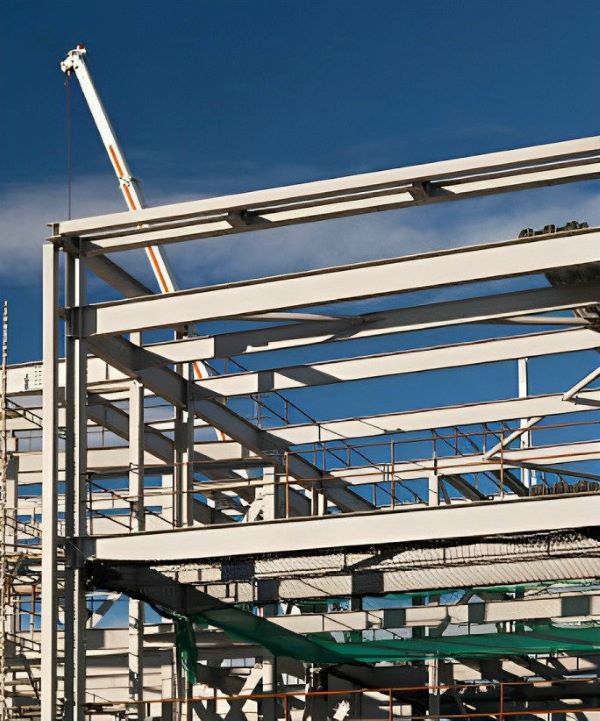
construction industry
Stainless steel angle bars find extensive use in the construction industry, bolstering the integrity of architectural and engineering structures. They are the backbone of vital structures such as transmission towers, load-bearing beams, sturdy bridges, and maritime vessels. The exceptional corrosion resistance and high tensile strength of stainless steel angle bars ensure the durability of these critical components. From industrial furnaces to robust shelving solutions, stainless steel angle bars are indispensable in construction projects, reinforcing the framework of modern infrastructure.
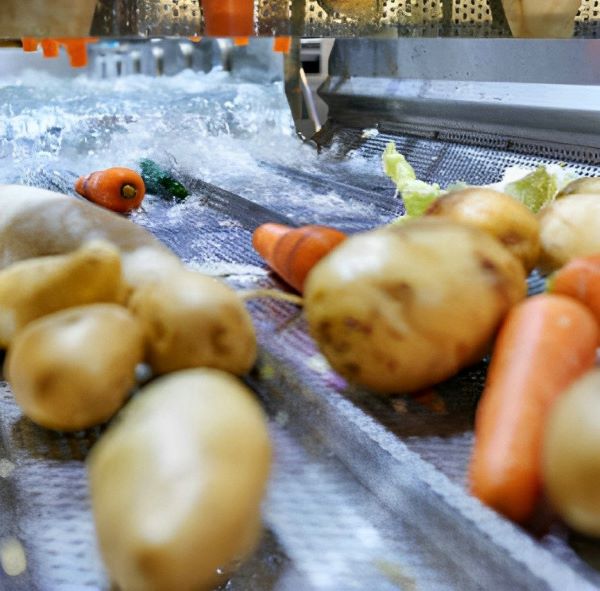
food processing industry
Their exceptional resistance to high temperatures and corrosion makes stainless steel angle bars a preferred choice in the food processing industry. They are employed in the fabrication of food processing equipment, where hygiene and durability are paramount. Stainless steel angle bars ensure a safe and clean environment for food production, adhering to stringent quality standards. Whether in commercial kitchens or large-scale food processing plants, these bars play a vital role in safeguarding the quality and integrity of food products.
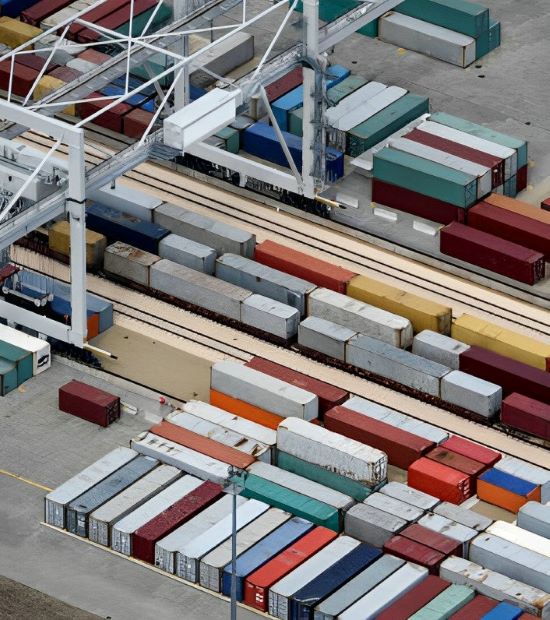
automotive and transportation sectors
Stainless steel angle bars drive innovation in the automotive and transportation sectors. Their versatility is showcased in various applications, from reinforcing automobile structures to providing essential components for trains and buses. These bars offer exceptional mechanical properties and corrosion resistance, ensuring the reliability of vehicles in diverse conditions. From chassis components to cargo handling equipment, stainless steel angle bars contribute to the safety and efficiency of the automotive and transportation industries, delivering passengers and goods securely to their destinations.
FAQ
Yes, stainless steel angle bars can be customized to specific requirements. Stainless steel bar supplier, like us at Huaxiao, offer customization options to meet the unique needs of your project. This includes tailoring the dimensions, length, surface finish, and even the grade of stainless steel to ensure it matches your specifications. Our experienced team can assist you in selecting the right customization options for your application.
The manufacturing process for stainless steel angle bars involves several key steps. First, raw materials like stainless steel billets or blooms are sourced. These materials are then heated in a furnace and hot-rolled to form the basic shape of the angle bar. The hot-rolled angle bars are then pickled and cleaned to remove any surface impurities.
Next, they undergo straightening to ensure they meet dimensional specifications. After straightening, the angle bars are cut to the required length. Depending on the specific application, they can also undergo various surface treatments, such as polishing or passivation, to enhance their appearance and corrosion resistance.
Stainless steel bar supplier, ensure that these bars are produced with precision and adhere to industry standards, delivering high-quality products to meet various project needs.
Yes, stainless steel angle bars can be welded. They are known for their weldability, which allows them to be joined together using various welding techniques, including TIG (Tungsten Inert Gas), MIG (Metal Inert Gas), and even traditional arc welding methods. This makes them versatile for structural and fabrication applications where welding is required. Stainless steel bar suppliers like Huaxiao can provide information and guidance on the appropriate welding processes and materials to use for specific applications, ensuring strong and reliable welds.
The price range for stainless steel angle bars can vary depending on factors such as the grade, size, finish, and quantity required. For specific pricing information and quotes, I recommend contacting Huaxiao stainless steel bar supplier directly. They can provide you with accurate and up-to-date pricing based on your exact specifications and requirements.
Stainless steel angle bars can be manufactured from various stainless steel materials, including grades such as 201, 202, 304, 304L, 316L, and more. The choice of material depends on the specific requirements of your application, including factors like corrosion resistance, mechanical properties, and environmental conditions. For guidance on selecting the most suitable stainless steel material for your angle bar needs, you can consult with Huaxiao stainless steel bar supplier. They can provide expert advice based on your project’s requirements.
To ensure that the stainless steel angle bars you choose meet quality standards and certifications, it’s essential to partner with a reputable supplier like Huaxiao stainless steel bar supplier. They typically provide products that adhere to industry standards and are certified for quality and performance. You can request documentation and certifications from the supplier to verify the quality of their angle bars. Additionally, working with an experienced and trusted supplier ensures that you receive high-quality stainless steel angle bars that meet your specific project requirements and industry standards.
other products
Get In touch
Ready to Elevate Your Projects? Dive into our Stainless Steel Collection and Submit Your Specifications Today!
Phone/WhatsApp/WeChat:
+86 13052085117
Email: [email protected]
Address: RM557, NO.1388 Jiangyue Road, Shanghai China


